Inbox and Environment News Issue 178
August 31 - September 6, 2014: Issue 178

Razor-sharp TV images with 4K definition
August 26, 2014 - The future of movie, sports and concert broadcasting lies in 4K definition, which will bring cinema quality TV viewing into people's homes. 4K Ultra HD has four times as many pixels as today's Full HD. And thanks to the new HEVC video compression standard, broadcasters can now transmit live video in the 4K digital cinema standard. From September 12 to 16, 2014, Fraunhofer researchers will be presenting latest hardware and software for high efficiency video encoding and decoding at the International Broadcasting Convention IBC in Amsterdam, Netherlands.
A few months ago the broadcaster Sky achieved a world first by transmitting a Bundesliga scoccer game live in 4K definition - the current digital cinema standard. With its 3840 x 2160 resolution, 4K provides four times as many pixels as today's Full HD TV resolution. Higher resolutions inevitably creates more than four times the data volumes of standard HD, so the broadcaster used the new HEVC video compression standard to transmit the huge amount of data. HEVC, short for High Efficiency Video Coding, was developed by major electronics manufacturers together with researchers from the Fraunhofer Institute for Telecommunications, Heinrich-Hertz-Institut, HHI. The key advantage of HEVC is that it requires only half the bitrate of its predecessor H.264 to provide the same picture quality - allowing it to transmit twice as much data on the same channel. This means that HEVC is practically made for the ultra-high definition of 4K television.
Live coding of 4K images with HEVC
The video compression technique was used for the game between FC Bayern Munich and SV Werder Bremen held in the Allianz Arena on April 26, 2014. The live coding of the 4K camera images from the stadium enabled the successful application of the technique developed by the HHI researchers together with their colleagues at Rohde & Schwarz. The HHI´s software and hardware solutions convert the camera images into a coded HEVC bitstream, which is then transmitted to televisions via satellite. Benjamin Bross, who heads up the HEVC project at the HHI, explains why this process is so special: "For the first time, we were able to encode 4K recordings live."
This type of real-time encoding throws up numerous challenges. While the previous standard, H.264, divides the image to be transmitted into blocks of 16 x 16 pixels, HEVC subdivides using variable block sizes. The encoder must therefore decide which block sizes make the most sense on an image-by-image basis. The HHI researchers will be demonstrating the complete HEVC processing chain at the IBC trade fair.
Right down to the smallest detail…
So far, so good. But how will viewers benefit from being able to watch 4K content with HEVC coding in their living rooms? The biggest plus is undoubtedly the astonishing level of detail in the razor-sharp picture. In a scoccer match, for example, one camera can capture the entire playing field. That gives viewers at home a strategic overview while still allowing them to make out every last detail. The first 4K televisions are already on the market, and web streaming services are starting to offer content in ultra HD resolution - so the 4K evening news is sure to be coming soon!
The above story is based on materials provided by Fraunhofer-Gesellschaft. Broadcaster transmitting a soccer game live in 4K definition. Image: Credit: © Heimbecher, Sky / Fraunhofer HHI
INTERCHANGING - Bus stop of the future
Published on August, 2014
UNSW Built Environment staff and students have designed a "smart" bus stop that provides a level of interactivity comparable to smart phones. MORE INFO: http://responsivetransport.org/wp/
With thanks: Gratitude can win you new friends
27 August 2014
Parents have long told their children to mind their Ps and Qs, and remember to say thank you. Now the evidence is in on why it matters. A UNSW-led study has shown for the first time that thanking a new acquaintance for their help makes them more likely to seek an ongoing social relationship with you.
“Saying thank you provides a valuable signal that you are someone with whom a high quality relationship could be formed,” says UNSW psychologist Dr Lisa Williams, who conducted the research with Dr Monica Bartlett of Gonzaga University in the US.
The study, published in the journal Emotion, involved 70 university students who provided advice to a younger student. Some of those advice-givers were thanked for their advice.
The study was designed to test a theory proposed two years ago to explain the benefits to individuals and society of the emotion of gratitude. This find-remind-and-bind theory suggests gratitude helps people develop new relationships (find), build on existing relationships (remind), and maintain both (bind).
The study tested the first aspect of the theory – finding.
The university students were led to believe they were mentoring a high school student, and were asked to comment on a university admissions essay, supposedly written by the mentee.
In reply, all mentor participants received a hand written note from their supposed mentee. In about half the cases the note included an expression of gratitude: “Thank you SO much for all the time and effort you put into doing that for me!”
The university students who were thanked were more likely to provide their contact details, such as their phone number or email address, for the mentee than those who were not thanked.
The grateful mentees were also rated as having significantly warmer personalities. The results suggest that the reason why people ‘find’ grateful others is because of this perceived warmth.
Perhaps surprisingly, this kind of experiment had not been conducted before.
“Our findings represent the first known evidence that expression of gratitude facilitates the initiation of new relationships among previously unacquainted people,” says Dr Williams.
“With more people communicating by social media, such as Facebook and Twitter, it would be interesting to find out whether just observing someone express gratitude increases another person’s desire to form a relationship with them.”
Fish out of water
Published on 27 Aug 2014
Around 400 million years ago, fish left the water and started to evolve into land-loving creatures. But how did the transition happen? A new and unusual experiment could shed some light on the kinds of changes that enabled fins to become limbs. Researchers took a fish species known to be able to walk on its fins from time to time, and raised it on land. Watch the fish promenade in this Nature Video.
Read the paper: http://dx.doi.org/10.1038/nature13708
To deter cyberattacks, build a public-private partnership
August 25, 2014 - Cyberattacks loom as an increasingly dire threat to privacy, national security and the global economy, and the best way to blunt their impact may be a public-private partnership between government and business, researchers say. But the time to act is now, rather than in the wake of a crisis, says a University of Illinois expert in law and technology.
According to a study by Jay Kesan, the H. Ross and Helen Workman Research Scholar at the College of Law, an information-sharing framework is necessary to combat cybersecurity threats.
"Cybersecurity is a big deal, and the protection of critical network infrastructure is a matter of national security," said Kesan, who directs the Program in Intellectual Property and Technology Law at Illinois. "If nothing else, cyberattacks are very expensive, costing the global economy almost a half-trillion dollars per year, according to some estimates. For either of those reasons alone it should be given more attention."
Meaningfully improving cybersecurity and ensuring the resilience of systems will require cooperation between members of the private sector and the government, according to the paper. To that end, Kesan and co-author Carol M. Hayes, a research associate with U. of I. College of Law, propose a framework for the sharing of information about threats and solutions that they believe reconciles the competing concerns of privacy and cybersecurity, Kesan said.
"Privacy and cybersecurity are not mutually exclusive, but balancing the two interests may require cooperation and the occasional compromise," Kesan said. "We believe that cybersecurity can be enhanced without creating an Orwellian, Big Brother world, and encourage the development of what we call a 'Circle of Trust' that brings the public and private sectors together to resolve cybersecurity threats more effectively."
The goal is to foster trust between the private and public sectors, he said.
"When the public sector shares information with the private sector, that encourages the private sector to trust the public sector, and vice versa," Kesan said. "Our proposed framework advances this notion of trust even further by allowing both sides to preserve a degree of secrecy - for example, government secrecy for classified military activities and geopolitical information, and private-market secrecy for consumer information, including information about consumers' online activities. It functions to assure participants that overreach by either side will be limited."
Private cybersecurity researchers could benefit from information about intrusion attempts and details about vulnerabilities uncovered by government actors, and government agencies could benefit from up-to-date information about private cybersecurity innovations and the identification of vulnerabilities by private firms, the researchers say.
Although some existing laws would need to be revised to implement the proposal, "both sides could benefit from information sharing about different security measures and their rate of success," Kesan said.
To emphasize the importance of cooperation, the paper presents case studies of two recent government proposals to address cyber threats: the proposed Cyber Intelligence Sharing and Protection Act (CISPA), and the presidential executive order that outlines procedures to establish voluntary cybersecurity standards.
Both proposals would create a way for qualified members of the private sector to obtain security clearances to receive classified cyber-threat information from the government, and CISPA also would allow the private sector to share cyber-threat information with government agencies.
But according to Kesan, efforts to address cyber threats may be hindered if policymakers rely solely on voluntary compliance.
"Both CISPA and the executive order take a voluntary approach, and we argue that a purely voluntary mandate is undesirable in both contexts," Kesan said.
Under each system as currently proposed, participation by private firms is purely voluntary and there is no penalty for non-compliance.
"Voluntary programs can be effective in some situations, but they may ultimately be interpreted only as aspirational guidelines," Kesan said. "In the sensitive context of cybersecurity, aspirational guidelines for security standards could lead to low levels of compliance, the withholding of valuable information by those who do not participate, and a greater risk of overshare by those who do participate."
On the other hand, mandatory programs with effective enforcement mechanisms are likely to result in higher levels of compliance, the authors note. This may be especially true when the program concerns highly complicated subject matter, as previous research has indicated that voluntary compliance may not be as effective in those situations.
"Government intervention with the free market should be minimized, but when cybersecurity issues have implications for national security, some degree of mandatory regulation would be beneficial," Kesan said. "The Obama administration recognized this through the issuance of the executive order on improving critical cybersecurity infrastructure, and Congress has recognized this as well."
Unfortunately, cybersecurity has proved to be a much more partisan issue than it should be, and Congress has not yet come together to take meaningful steps to protect the cyber infrastructure, Kesan said.
"Advocates for private enterprise have discouraged the imposition of meaningful cybersecurity requirements on privately owned critical infrastructure, while advocates for civil liberties and privacy invariably react with alarm to regulation that involves the collection of information about threats," he said.
Both Kesan and Hayes believe it is unlikely that Congress will pass effective cybersecurity legislation in the current session, which is scheduled to end on January 3, 2015. Although the presidential executive order and their proposed cybersecurity framework could provide some helpful first steps, the authors say that it is neither feasible nor desirable to rely solely on executive power to shore up the cyber defenses of the government and the private sector.
"Ideally, our proposed cybersecurity framework would be implemented alongside supporting legislation to ensure that cybersecurity actions and standards are subject to the checks and balances of our system of government," Kesan said. "CISPA could be easily revised to accompany our framework."
The authors also contend that it is important to ensure that this issue is subject to deliberate and careful decision-making by policymakers before a massive cyber catastrophe forces the government to act quickly and without adequate safeguards. They point to to the history of the Patriot Act, which was hastily passed in the aftermath of 9/11, and has been the target of significant criticism on civil liberties grounds over the last thirteen years.
"It's vital that these issues are addressed soon while there is still a chance to prevent a catastrophic cyber event," Kesan said. "It would be ill-advised to rely solely on executive power or on legislation that is hastily drafted and enacted after an emergency."
Carol M. Hayes, Jay P. Kesan. At War Over CISPA: Towards a Reasonable Balance between Privacy and Security. SSRN Electronic Journal, 2012; DOI:10.2139/ssrn.2135618
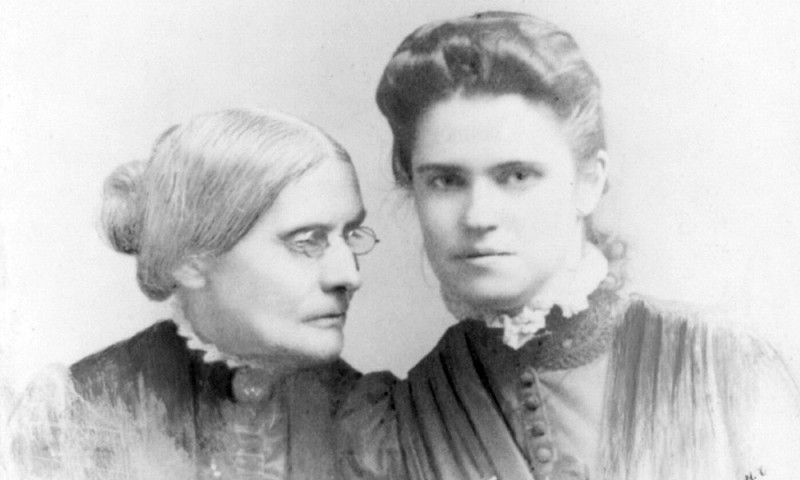
Ninety-four years ago women won the right to vote; newly discovered letters will help show how
August 26, 2014 - On Aug. 26, 1920, with the formal adoption of the 19th Amendment, women won the right to vote. Now, a newly discovered collection of Susan B. Anthony letters will help show how. The letters were written by Anthony to her "most cherished young lieutenant" Rachel Foster Avery from 1881 through the turn of the century. Acquired last week by the University of Rochester's River Campus Libraries, the historic collection will help bring to life the suffrage movement through the eyes of two of its most important members.
Anthony and Avery were connected through the National Woman Suffrage Association and the National American Woman Suffrage Association. The new collection includes more than 60 autographed and typed letters, signed cabinet cards and photographs, and other related material. The University purchased the items on Aug. 19 from two auction houses - the American Eagle Auction and Appraisal Company in Livonia, Michigan and the Super Action in Ann Arbor, Michigan.
"This is an outstanding acquisition for the libraries and for the Rochester community," said Mary Ann Mavrinac, vice provost and Andrew H. and Janet Dayton Neilly Dean of the River Campus Libraries. "It augments what is arguably the nation's strongest manuscript collection related to the long working and personal relationship between Anthony and Avery. We are honored to bring such historically significant letters to our libraries."
Anthony, a Rochester resident from 1845 until her death in 1906, successfully persuaded the University of Rochester to admit women in 1900. The library's Department of Rare Books, Special Collections, and Preservation already stewards important holdings related to Susan B. Anthony's role in women's suffrage, including the existing Anthony-Avery collection, which was acquired in 1972 at an auction of Avery family papers. Reuniting these collections will provide new primary sources for teaching and research both on campus and more broadly. The as-yet-unstudied letters help chronicle a critical chapter in the history of suffrage and women's rights in the United States.
Plans are underway to begin digitizing these new materials in the coming weeks. Materials from other Anthony-related collections owned or on deposit at Rush Rhees have been digitized and transcribed for the online exhibition, Susan B. Anthony: Celebrating "A Heroic Life."
The above story is based on materials provided by University of Rochester. 1889 photo of Susan B. Anthony with Rachel Foster Avery. Credit: Library of Congress
Online Exhibition at: http://www.lib.rochester.edu/index.

Do we live in a 2-D hologram? Experiment will test the nature of the universe
August 26, 2014 – A unique experiment at the U.S. Department of Energy's Fermi National Accelerator Laboratory called the Holometer has started collecting data that will answer some mind-bending questions about our universe - including whether we live in a hologram.
Much like characters on a television show would not know that their seemingly 3-D world exists only on a 2-D screen, we could be clueless that our 3-D space is just an illusion. The information about everything in our universe could actually be encoded in tiny packets in two dimensions.
Get close enough to your TV screen and you'll see pixels, small points of data that make a seamless image if you stand back. Scientists think that the universe's information may be contained in the same way and that the natural "pixel size" of space is roughly 10 trillion trillion times smaller than an atom, a distance that physicists refer to as the Planck scale.
"We want to find out whether space-time is a quantum system just like matter is," said Craig Hogan, director of Fermilab's Center for Particle Astrophysics and the developer of the holographic noise theory. "If we see something, it will completely change ideas about space we've used for thousands of years."
Quantum theory suggests that it is impossible to know both the exact location and the exact speed of subatomic particles. If space comes in 2-D bits with limited information about the precise location of objects, then space itself would fall under the same theory of uncertainty. The same way that matter continues to jiggle (as quantum waves) even when cooled to absolute zero, this digitized space should have built-in vibrations even in its lowest energy state.
Essentially, the experiment probes the limits of the universe's ability to store information. If there is a set number of bits that tell you where something is, it eventually becomes impossible to find more specific information about the location - even in principle. The instrument testing these limits is Fermilab's Holometer, or holographic interferometer, the most sensitive device ever created to measure the quantum jitter of space itself.
Now operating at full power, the Holometer uses a pair of interferometers placed close to one another. Each one sends a one-kilowatt laser beam (the equivalent of 200,000 laser pointers) at a beam splitter and down two perpendicular 40-meter arms. The light is then reflected back to the beam splitter where the two beams recombine, creating fluctuations in brightness if there is motion. Researchers analyze these fluctuations in the returning light to see if the beam splitter is moving in a certain way - being carried along on a jitter of space itself.
"Holographic noise" is expected to be present at all frequencies, but the scientists' challenge is not to be fooled by other sources of vibrations. The Holometer is testing a frequency so high - millions of cycles per second - that motions of normal matter are not likely to cause problems. Rather, the dominant background noise is more often due to radio waves emitted by nearby electronics. The Holometer experiment is designed to identify and eliminate noise from such conventional sources.
"If we find a noise we can't get rid of, we might be detecting something fundamental about nature - a noise that is intrinsic to space-time," said Fermilab physicist Aaron Chou, lead scientist and project manager for the Holometer. "It's an exciting moment for physics. A positive result will open a whole new avenue of questioning about how space works."
The Holometer experiment, funded by the U.S. Department of Energy Office of Science and other sources, is expected to gather data over the coming year.
The above story is based on materials provided by DOE/Fermi National Accelerator Laboratory.
Picture: A Fermilab scientist works on the laser beams at the heart of the Holometer experiment. The Holometer will use twin laser interferometers to test whether the universe is a 2-D hologram.Credit: Fermilab
Concert to celebrate Peter Sculthorpe
25 August 2014
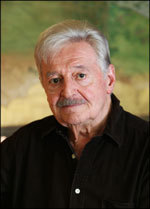 The University of Sydney announces a special evening to celebrate the life and music of Peter Sculthorpe AO OBE, Australia's most revered composer of the 20th century. The free public performance will be presented by Sydney Conservatorium of Music and its students on Saturday 25 October 2014 from 7pm.
The University of Sydney announces a special evening to celebrate the life and music of Peter Sculthorpe AO OBE, Australia's most revered composer of the 20th century. The free public performance will be presented by Sydney Conservatorium of Music and its students on Saturday 25 October 2014 from 7pm.
The gala event will be held in honour and celebration of the Emeritus Professor's immense, life-long contribution to music in this country, and the 51 years of his life that he devoted to the University of Sydney.
"Peter Sculthorpe is one of those extraordinary artists whose immeasurable impact on music will become more and more apparent in years to come.& The concert will give us a glimpse of the legacy of this gifted musician, as we again take enormous pleasure in listening to his most cherished works," said Dr Michael Spence, Vice Chancellor, The University of Sydney.
Performances of three signature works written by the composer: Kakadu (1988), the Burke & Wills Suite (1986) and Canticle V will be presented by the Sydney Conservatorium of Music's Symphony Orchestra, Wind Symphony and Chamber Choir.
Marking the celebration, four colleagues and former students of Sculthorpe, ProfessorAnne BoydAM,Professor Matthew Hindson AM, Dr Ross Edwards AM and Kim Williams AM, will give personal reminiscences.
"Rarely is it given to a single individual to inscribe the soul of a nation in their musical utterance. As a passionate Australian seeking the spiritual in nature, such has been Peter's contribution to Australian culture as will be heard in the music performed in this concert," said Professor Boyd.
Peter Sculthorpe first came to the University of Sydney in 1963 at the invitation of Professor Donald Peart to take up an appointment as Lecturer in Music in the Faculty of Arts' Department of Music. His first teaching was in ethnomusicology, stimulating a lifelong interest in the musical traditions of Asia, of Japan and Bali in particular. He inflected all his teaching towards composition, nurturing generations of young composers.
He was promoted to a personal Chair in Musical Composition within the Faculty of Arts in 1991 and played a significant role in bringing the Sydney Conservatorium of Music into the University. In 2005 he became an Emeritus Professor of Composition at the University of Sydney, and continued to support and inspire music students in the final years of his life. Peter Sculthorpe passed away earlier this month at the age of 85.
The Peter Sculthorpe concert at the Sydney Conservatorium of Music is a free event, however tickets are required. Registration is essential and is available online at http://music.sydney.edu.au from Wednesday 1 October 2014 with a limit of two tickets per person.
Event Details
What: Peter Sculthorpe AO OBE (1929-2014) - In celebration of his life and music
When: Saturday 25 October at 7pm
Where: Verbrugghen Hall, Sydney Conservatorium of Music
Cost: Free - bookings essential at http://music.sydney.edu.aufrom 1 October 2014
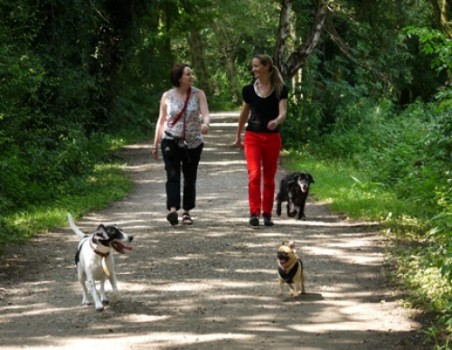
Education, dog-friendly neighborhoods could tackle obesity
August 26, 2014 – A study from the University of Liverpool has recommended investing in dog owner education and facilities as a strategy to target physical inactivity and problems such as obesity in both people and their pets. In a review of scientific papers published since 1990, the researchers found that access to dog-friendly walking environments and better education about dogs' physical needs, could all motivate people to get out and take more exercise with their pets.
It is estimated that 40% of dog owners don't take their dogs for a walk. In the UK, almost a quarter of households own a dog, but less than half of adults meet the recommended level of 150 minutes a week of physical activity.
To find out how to motivate people to use dog walking as a form of exercise, the researchers from the University's Institute of Infection and Global Health reviewed 31 research studies from the UK, USA, Australia and Japan.
Among the most common findings was that dog owners have a varied understanding of how much exercise their dog needs. This affected how much they took their dog for a walk and this is something that could be addressed with education programs.
Similarly, people without access to high quality local areas that support dog walking, for example parks where dogs are allowed off-leash and poo-disposal facilities are provided, were less likely to walk with their dog and missed out on the associated health benefits.
Population health scientist, Dr Carri Westgarth led the study. She said: "It is easy to assume that people who own dogs are more likely to take exercise, but the reality can be very different. If all people who owned a dog walked with it every day, physical activity levels would be much improved, benefiting the health of both the owners and their canine companions.
"There are a large number of reasons why people do or don't walk their dog and it is worth considering how we can address this when designing strategies for reducing obesity, or when planning urban areas and public open space. Not being able to let their dog off the leash is a particular put-off."
The most striking but understandable finding was that the strength of the dog-owner bond is important - owners who were highly attached to their dogs and felt that their dogs gave them support were more likely to walk with it.
Dr Westgarth said: "The study also found that some people are worried about their dogs' behaviour and may be less likely to take it out to the park - potentially out of embarrassment or worry about how it might act - but lack of walks may also be causing this bad behaviour, due to boredom, frustration or lack of socialisation.
"There aren't many studies in this area at the moment, but with such a large proportion of people having a dog, it seems that better education, facilities and improved relationships with our pets could be a great way for a large portion of the population to feel encouraged to exercise."
Carri Westgarth, Robert M Christley, Hayley E Christian. How might we increase physical activity through dog walking?: A comprehensive review of dog walking correlates. International Journal of Behavioral Nutrition and Physical Activity, 2014; 11 (1): 83 DOI: 10.1186/1479-5868-11-83
Picture: Dr Westgarth (left) and co-researcher Dr Hayley Christian of the University of Western Australia. Credit: Image courtesy of University of Liverpool
Independent panel review of Renewable Energy Target
Joint media release - 28 August 2014
The Government has released the report from the independent panel on the review of the Renewable Energy Target (RET).
The Government welcomes the report which is an assessment of the operation of the RET and its impact on electricity prices and energy markets, as well as its costs and benefits for the renewable energy sector, the manufacturing sector and Australian households.
The RET was required to be reviewed under legislation this year and as part of a two-yearly review. The Government committed to reviewing the RET to ensure it is working efficiently and effectively.
The report is the result of months of extensive consultation with the renewable energy sector and Australian industry. The review received over 24,000 submissions and met with more than 200 stakeholders.
The Government will consider the findings of the independent panel's review in the context of the costs and benefits of the scheme, the impact on electricity prices and markets and sovereign risk issues.
The Government will announce its response to the report in the coming weeks.
Renewable energy plays an important and ongoing part in Australia's energy mix. The Australian Government is supporting ongoing investment in renewable energy projects, including with a $1 billion dollar investment in almost 200 projects across a range of renewable energy technologies.
The RET has underpinned investment in large and small scale renewable energy generation, particularly in wind, solar PV and hot water systems.
There are currently 416 renewable energy power stations accredited under the large-scale RET and around 2 million household renewable energy systems installed under the small-scale scheme.
The Australian Government is determined to ensure Australia's energy market is robust and reliable and that Australian households and businesses continue to have access to affordable power, which is the foundation of Australia's competitive advantage and our growing global status as an energy superpower.
The Government thanks the members of the independent panel, Mr Dick Warburton AO LVO, Mr Matt Zema, Dr Brian Fisher AO PSM and Ms Shirley In't Veld, for their work.
The report is available at: http://retreview.dpmc.gov.au/
Fishing back on for Australian bass and estuary perch from September 1st
28 Aug 2014
Fishers can again take to NSW waterways from September 1 to catch two of Australia's favourite native sportfish, with the annual three month closed season for Australian bass and estuary perch, drawing to a close.
Department of Primary Industries (DPI) Acting Senior Fisheries Manager Inland, Craig Watson, said an annual zero bag limit for the species has been in place from June 1 to August 31 in all rivers and estuaries (except in impoundments and in rivers above impoundments) to protect these species during spawning.
"Australian bass and estuary perch are both sought after sportfish and are found in coastal rivers and lakes," Mr Watson said.
"Both species form schools and migrate to parts of estuaries with the correct salinity over late autumn and early winter to trigger spawning.
"When they are in these large groups they can be vulnerable to fishing, so a three month zero bag limit for these fish applies.
"The spawning period for these fish has now finished with many returning to their spring and summer feeding ground higher up in the catchment.
"From September 1, fishers can once again take these native species, however bag limits will apply."
>A total bag limit of two Australian bass or estuary perch per person or a combination of both with a possession limit of four is in place.
Only one fish is permitted to be over 35 centimetres in length when fishing in rivers.
DPI Acting Director of Fisheries Compliance, Tony Andrews, said anyone who is unsure of the fisheries rules should always check before they go fishing.
"Fishing laws are designed to protect, conserve and improve our fisheries resources for our future generations," Mr Andrews said.
"Heavy penalties for illegal fishing are in place so it is always best to check the rules before going out fishing.
"Fishers should always ensure they have a current NSW recreational fishing licence and have it in their immediate possession when dropping in a line."
Information on freshwater fishing rules can be found in the NSW Recreational Freshwater Fishing Guide available from DPI Fisheries offices, online, at fishing licence agents and bait and tackle shops.
September is National Biodiversity Month
Biodiversity month is held in September each year. It promotes the importance of protecting, conserving and improving biodiversity in Australia and around the world. Find out more about protecting Australia's biodiversity
Robots to ResQu our rainforests
Published on 26 Aug 2014
Australia’s rare and precious rainforests, like the iconic Daintree, could have an unexpected aerial ally in the battle against weeds – autonomous helicopters. Two Project ResQu helicopters developed by CSIRO completed trial flights near Cairns, locating weeds like the dreaded ‘purple plague’, or Miconia calvescens, faster and more reliably than ever.
For more information: www.csiro.au/Miconia.aspx
Threatened, brand new and unique vegetation catalogued in Oxley Wild Rivers National Park
Media release: 26 August 2014
The NSW National Parks & Wildlife Service (NPWS) has completed a comprehensive review and assessment of the vegetation and plant species of the whole of Oxley Wild Rivers National Park, east of Armidale, and the results are stunning.
NPWS Walcha Area Ranger Patrick Lupica said the diversity of plant species in the park was incredible.
“Consultants from Eco Logical Australia were contracted to undertake the monumental task of reviewing and collating 40 years of existing information and carrying out 371 additional site surveys across the park.
“The report, maps and data have now been finalised and indicate some stunning results,” he said.
Botanist Dr Lachlan Copeland of Eco Logical said the findings included some new species. 1014 native plant species were recorded across this magnificent 161,000ha World Heritage park making it the largest species list available for any reserve in north-eastern NSW, and possibly NSW.
“15 plant species occurring in the park are currently listed as threatened under state or federal legislation, while a further 68 plants are still considered to be of high conservation significance,” he said.
“Many of these plants have only been recently discovered and remain undescribed – in reality several of these are far more significant than the species officially listed as threatened.
“A new species to science (Trachymene sp. aff. composita) was discovered during the survey and this highly restricted species is known from just two small populations totalling approximately 100 individuals.
“Several other new populations of highly significant and/or threatened species were also discovered and documented during our fieldwork.
“Four plant communities currently listed as endangered were documented and mapped in the park. One of the plant communities of key interest in the park is the extensive gorge rim system.
“These narrow, rocky areas at the interface of the tablelands and the steep gorge country are home to a particularly high proportion of rare plant species.
“Most plants that only occur in Oxley Wild Rivers NP, of which there are at least 12, occur only in this environment,” Dr Copeland said.
Mr Lupica said the comprehensive vegetation report also provided NPWS with valuable information to better manage issues such as fire and invasive weeds.
“The full species list for the park can be made available for interested people. This information will provide a valuable educational asset for our community well into the future,” he said.
Photo: by LachlanCopeland_a species new to science (Trachymene sp. aff. composita) discovered during a comprehensive review and assessment of the vegetation and plant species of Oxley Wild Rivers National Park and this highly restricted species is known from just two small populations totalling approximately 100 individuals. 1014 native plant species were recorded across the 161,000ha World Heritage park making it the largest species list available for any reserve in north-eastern NSW.
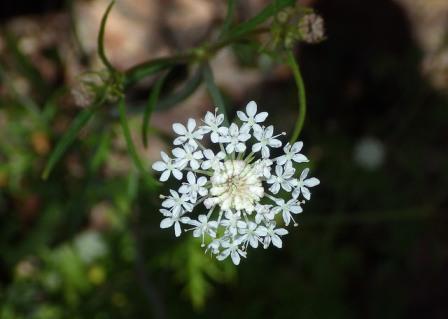
OVER 180 NEW PROJECTS TO PROTECT OUR DIVERSE HERITAGE
Rob Stokes MP, Minister for the Environment, Minister for Heritage, Minister for the Central Coast, Assistant Minister for Planning
MEDIA RELEASE - Monday 25 August 2014
Heritage projects across the state have been awarded almost $1.5 million under the NSW Heritage Grants program, Heritage Minister Rob Stokes announced today.
Speaking at a Local Government Heritage Network event in Parramatta, Mr Stokes said NSW’s heritage assets were vital to the character and identity of our state, cities and neighbourhoods.
“The funding will be shared by 181 new projects that will protect heritage places and conserve historic places for future generations,” Mr Stokes said.
“Heritage adds character and distinctiveness to an area, and is fundamental in creating a sense of place for a community.
“The NSW Heritage Grants program is designed to provide direct financial assistance to private owners, councils and community-based organisations to conserve and revitalise places of heritage significance.
“In order to save our heritage, we need to use our heritage. The NSW Government is committed to caring for places of heritage significance and supporting projects which protect our heritage while adapting sites for new uses.
“New heritage projects can also boost tourism and employment opportunities, particularly in rural and regional communities.”
The heritage of Parramatta will benefit from $17,000 from the NSW Government Heritage Grants Program, Parramatta MP Geoff Lee announced.
Mr Lee welcomed grants of $9,000 and $8,000 to Parramatta City Council that will go towards their local heritage places grants program and heritage advisory services.
“I’m delighted these grants have been awarded to these important heritage services in our local area,” Mr Lee said.
A full list of projects funded under the 2014/15 NSW Heritage Grants program can be found atwww.environment.nsw.gov.au/Heritage/funding/
Improving Economic Regulation of Urban Water
Media release - 26 August 2014
Today the Water Services Association of Australia released their publication on Economic Regulation of Urban Water, highlighting opportunities to improve efficiency in the water sector.
"This publication is an example of why Australia has become a world leader in water management, but demonstrates there remains room for improvement," said Senator Simon Birmingham, Parliamentary Secretary for the Environment.
"It demonstrates our capacity and willingness to scrutinise current approaches to water management and, drawing from international experiences or from other areas of the economy, to ask where further improvements may be made.
"Across Australia, 81 utilities supply good quality drinking water to around 18.7 million Australians, every day, every year, including many of Australia's largest industrial and commercial enterprises.
"Alongside land, labour and energy, water is a key input cost for businesses and households. As a natural monopoly the efficient regulation of water can both boost productivity and ease cost of living pressures," he said.
The Water Services Association of Australia's publication reports on the benefits of independent regulation of urban water prices in four states and the Australian Capital Territory, delivering economic gains, environmental benefits and more responsive regulatory systems.
"Independent regulation of water utilities clearly stands as best practice, which should be applied across Australia," Senator Birmingham said.
"Best practice regulation should be clearly independent of water utilities and their owners. It should be as light touch as possible, ensure it keeps prices as low as possible and help drive efficient future infrastructure decisions.
"Reforms to urban and rural water management have helped deliver the right signals to businesses and consumers to value water and to use it wisely.
"Future reforms can build on the legacy of the 2004 National Water Initiative, reduce future price pressures, boost economic output and encourage private sector investment in infrastructure.
"This report by the Water Services Association of Australia provides guidance to state and territory governments as the primary managers of the urban water sector that I hope they will heed," he said.
A copy of Improving Economic Regulation of Urban Water is available at www.wsaa.asn.au.
Google Partnership brings Street View to local National Parks
Media release: 22 August 2014
The NSW Government has teamed up with Google to go off-road and map some of NSW's most stunning national parks, including Tomaree National Park at Nelson Bay.
The partnership involves NSW National Parks and Wildlife (NPWS) staff wearing a special backpack equipped with the ‘Street View’ camera system, capturing 360 degree imagery of some amazing walks & landscapes as they walk through the park.
NPWS Hunter Coast Area Manager Andrew Bond said that today (22/8) the google trekker was out and about capturing the spectacular views from Tomaree Head in Tomaree National Park.
Mr Bond said “The walk up the 161 metre Tomaree Head rewards visitors with breathtaking views of the Port Stephens coastline, and is truly one of the ‘must do’ experiences when visiting Nelson Bay.
“We are delighted to present Tomaree National Park through the use of this state of the state art technology, and share its beautiful landscapes with more people than ever.
“Tomaree National Park, is one of 16 NSW national parks being mapped by NPWS and Google.
"When completed later in the year, the Street View imagery will give people another great a way to plan their park visits and learn about the area beforehand”, Mr Bond said.
NSW National Parks is the first organisation in Australia to be part of the Google Trekker loan program, which sees third party organisations, NGO’s and not-for-profits apply to borrow Trekker to collect imagery of hard to reach places and help map the world.
Photo: JSpencer/OEH_- NPWS Senior Field Officer David Porter had the google trekker was out and about capturing the spectacular views from Tomaree Head in Tomaree National Park 22 August 2014.
UNSW solar shines in new ARENA R&D funding
26 August 2014
Photovoltaic researchers at UNSW have secured more than $7 million in support from the first round of the Australian Renewable Energy Agency's (ARENA) Research and Development Program.
The five grants – three for UNSW-led projects and two for ANU-led projects with UNSW involvement – cover research that will improve performance or reduce manufacturing costs for solar technologies.
Bob Baldwin, Parliamentary Secretary to the Minister for Industry, announced the first round of grants for 12 projects worth $21.5 million, at an ARENA-hosted event at UNSW today.
"This month marks the 40th anniversary of the beginning of photovoltaics research here at UNSW. These latest grants build on four decades of innovation and leadership in the field," said Darren Bagnall, Head of the School of Photovoltaic and Renewable Energy Engineering (SPREE).
Faculty of Engineering Dean Graham Davies added: "It is great to see that the world-leading research in Photovoltaics at UNSW is being supported by the Government."
One of the UNSW-led projects aims to combine three innovative manufacturing approaches to improve production of next-generation commercial silicon solar cells. It builds on industry-leading solar cell architectures developed under earlier ARENA projects, and involves a number of world-leading industry partners.
A second UNSW-led project is focused on high-efficiency silicon and perovskite tandem cells and modules.
Perovskite is an emerging material that can be paired with silicon to produce solar panels that could be cheaper and more efficient than conventional silicon-only panels.
Scientia Professor Martin Green will lead the multi-disciplinary team of Australian and international universities and industry partners working on the tandem cells. Work commenced earlier this month.
A third UNSW-led project aims to use a new measurement system and advanced simulation tools to investigate processes that impact the performance of solar cells. Work on this project has also commenced.
UNSW is involved in a further two projects that are being led by ANU researchers.
All projects are expected to finish between 2018 and 2020, and include additional funding from UNSW and industry.
The Australian Government established ARENA as an independent agency on 1 July 2012 to make renewable energy technologies more affordable and increase the amount of renewable energy used in Australia.
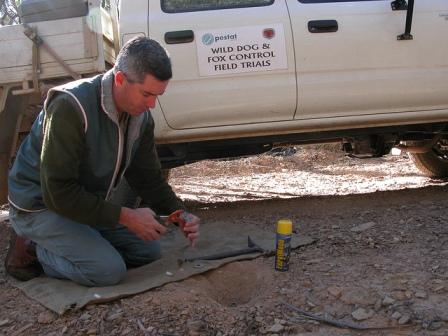
NSW and Victorian cross-border wild dog management in focus
Media release: 27 August 2014
Land managers from NSW and Victoria will combine forces to tackle wild dogs on their shared border.
The South East-Far East Gippsland Cross-Border Community Wild Dog Working Group (SEFEG) was formed at a recent community meeting in Delegate to take action on this important issue.
NSW National Parks and Wildlife Service (NPWS) Area Manager Franz Peters chaired the meeting and said the new group would stay in frequent contact and meet annually.
“We are all committed to sharing information and improving our cross border working arrangements,” Mr Peters said.
“This was agreed by members of the Bombala and Far South Coast Community Wild Dog Working Group, landholders from the Bendoc-Bonang communities, trappers and other staff from the Victorian Department of Environment and Primary Industries (DEPI Vic including trappers) and landholder representatives of the Corrowong Merriangaah Wild Dog Working Group.”
Local landholder Janice Franklin recently met with NSW Cross Border Commissioner (CBC) Steve Toms. At the Delegate meeting, she reported back on her encouraging discussions about a cross-border approach to wild dog management.
The newly formed SEFEG also endorsed a new zone and will now draft maps, baiting plans and details of priority actions required including their costs. The new group will provide these materials to Mr Toms.
Other issues identified for the CBC's attention were:
Mapping a 'zone' to illustrate the agreed, cross-border, wild dog management zone and the regulatory issues facing the effected NSW/Vic border communities, and to further address wild dog impacts in the Bendoc/Bonang and Tubbut areas.
To consider the introduction of strategic aerial baiting in the identified cross border zone.
To address the issue of differentiating between wild dog management and dingo protection in the Victorian cross border zone to reflect the NSW Pest Order.
The need for adequate funding to deliver effective and efficient wild dog and fox management strategies in the cross border zone, especially in the Bendoc-Tubbut communities of the Victorian Cross Border area and the adjacent NSW Bombala and Corrowong Plan areas. These have been defined and mapped as the SEFEG, Cross Border Wild Dog Management Zone and include the existing Wild Dog Management Zones for Far East Gippsland.
It is envisaged that the issues raised at the Delegate meeting will be taken up by the CBC to ensure a more strategic, interstate approach to managing wild dogs.
DEPIs Biosecurity Area Leader for Wild Dogs in Gippsland Vaughn Kingston said the group had made an important step in managing wild dogs in the region. Mr Kingston described new cross border initiatives coming from Victoria including:
Improved access to dog baits in NSW. DEPI has a trial in place that allows producers to cross the border and access baits at the same cost if they are accredited (either Victorian or NSW accreditation). The Department is encouraging producers to take advantage of this opportunity;
Greater access to beyond 3km buffer. DEPI is working at strategic sites beyond the 3 kilometre buffer and have been for some time with wild dog controllers and contractors contributing to baiting;
Adequate funding – DEPI is working with Southern Ark, another DEPI initiative, baiting dogs adjoining private land as well as adjoining the DEPI wild dog program areas, to improve outcomes for livestock producers; and
The good work done by Community Wild Dog Control Coordinators in organising community baiting programs (twice annually) in Bendoc, Bonang and Tubbut districts with 7,000 hectares baited on private land by producers, 12 participants and over 1,300 baits laid annually.
SEFEG will meet annually to continue to work on issues effecting interstate wild dog management. Information regarding the recent Delegate meeting can be obtained from the NPWS Bombala Area office.
Read more about wild dog management: here
Photo: NPWS Ranger, Rob Hunt, setting up an M-44 ejector in the field to help in the control of wild dogs and foxes within national parks
Great Barrier Reef Outlook Report – from GBRMPA
Every five years, we publish an Outlook Report that examines the Great Barrier Reef’s health, pressures, and likely future.
The report is required under Great Barrier Reef Marine Park Act 1975 (section 54) and aims to provide a regular and reliable means of assessing reef health and management in an accountable and transparent way.
For the first time, the report specifically considers the Great Barrier Reef Region’s heritage values, including Indigenous heritage, historic heritage and the area’s world heritage values.
This assessment is new and responds to revised requirements of our Act and the World Heritage Committee requesting an explicit assessment of the area’s outstanding universal value.
The report acknowledges there’s been a range of positive actions since 2009, including government and landholders focusing on improving the quality of water that runs off the land.
The report finds the greatest risks to the Reef are still climate change, land-based run-off, coastal development, some remaining impacts of fishing and illegal fishing and poaching.
The extensive assessment and stakeholder engagement work undertaken for the Great Barrier Reef Region Strategic Assessment was very strongly drawn on in the process of developing this Outlook Report.
To view our Outlook Report and in brief as an online flipbook. These reports and supporting reports are also in our e-library.
In brief report: asp-au.secure-zone.net/v2/1342/1518/5812/GBRMPA-Outlook-Report-2014-IN-BRIEF.pdf
In full; asp-au.secure-zone.net/v2/1342/1518/5784/GBRMPA-Outlook-Report-2014.pdf
Kimbriki Resource Recovery Centre
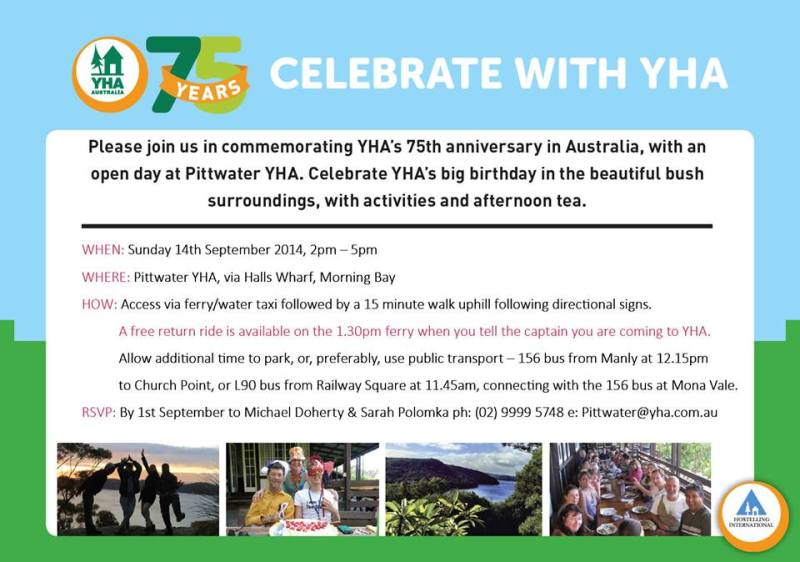
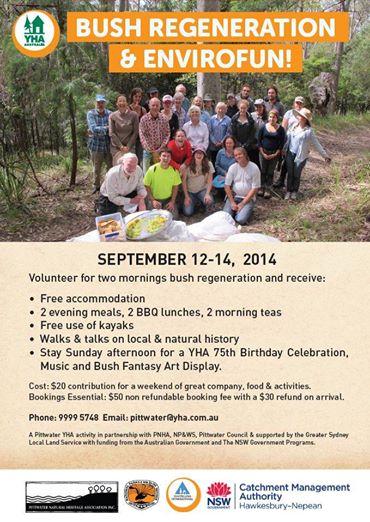
Petition: Suspend the NSW RFS 10/50 Rule pending proper assessment
On 1 August 2014 a new set of rules (called the 10/50 Rule) to do with vegetation removal came into force in NSW. Although intended for the public to "fire proof" their homes, its implementation goes far wider than that with very worrying consequences for the environment.
Essentially, the rules permit homeowners in areas declared suitable for clearing to cut down any trees within 10 metres of any building with habitable rooms or remove understory vegetation within 50 metres. This applies in rural or urban areas. Owners do not have to seek any approval if they comply with a Code of Conduct. Areas declared suitable do not take into account any threatened species or endangered ecological communities.
One of the major problems is that there are no publicly available maps of the areas suitable for the Rule. The only way to find out is to use an online tool, one address at a time. In a random search of Hawks Nest and Tea Gardens I found that the whole of both towns appear to be "suitable"! Great Lakes Council and the local RFS brigades were not consulted on suitable areas before the rules were activated.
The online tool can be found at: www.rfs.nsw.gov.au/plan-and-prepare/1050-vegetation-clearing/tool
This rule could have a devastating effect on wildlife all over NSW and our Hawks Nest/Tea Gardens "endangered" koala population in particular. Homeowners in our urban area with a small (no more than 22) koala population could devastate koala habitat by removing virtually all trees without even having to consult the local Council. The Myall Koala and Environment Group is seeking to have the new rules suspended until proper consultation is initiated with local authorities with a view to correctly identifying the severity of bush fire threat and taking threatened species into account.
We have just lost one of our last remaining stands of littoral rainforest on Fingal Head coast by a disgruntled landowner who had his DA knocked back due to the significant vegetation on his block - 2 days after his DA was refused he cut the whole forest down under 10/50. http://www.echo.net.au/2014/08/fingal-head-locals-outraged-rare-tree-massacre/
Petition: HERE

Marsupial Night Stalk
5th Sep 2014 - 7pm - 9pm
A fun evening discovering our special native nightlife.
Come and join us after dark for an exciting evening looking for some of the nocturnal creatures that live in Pittwater. In recognition of Threatened Species Week, Pittwater Council will join with volunteers from all over Australia to participate in the Perth Zoo's Annual Night Stalk! This walk is suitable for children aged 5 and above.
Where: Meet point provided on booking. Cost: Free! Bookings Essential! Online. In person: Coastal Environment Centre, Lake Park Road, North Narrabeen Phone: 1300 000 232 (Reception - Option 1)
Threatened Species Day Biodiversity Workshop
7th Sep 2014 - 12pm - 2pm
Join us to learn all about biodiversity and Pittwater's threatened species!
Pittwater Council is recognising Threatened Species Day by holding an informative workshop which will look at the amazing diversity of wildlife both on the land and in our oceans. Join us for a great workshop where we will discuss the wealth of biodiversity here in Pittwater and some of the issues facing our plants, animals and marine creatures.
Where: Meet point provided when booking. Cost: Free Bookings Essential! Online In person: Coastal Environment Centre, Lake Park Road, North Narrabeen Phone: 1300 000 232 (Reception - Option 1)
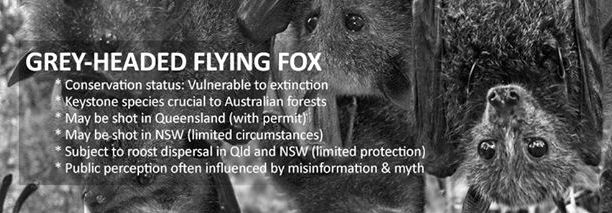
Threatened species DaySunday September 7th – 2014
By The Brink
Each year, we select one species as the ambassador for The Brink and focus our efforts on that species.
By doing this, we aim to initiate actions that will help that species. At the same time we want to impress on government authorities that many people feel strongly that the conservation of wildlife is a priority.
The species chosen for Threatened Species Day (2014) is the Grey-headed Flying Fox, Pteropus Poliocephalus.
ABOUT FLYING FOXES
Grey-headed Flying-foxes are endemic to Australia and one of the largest species of bats in the world, with a wingspan of well over a meter. Flying foxes are fruit and nectar eaters.
They are unique pollinators and seed dispersers due to their habit of feeding on night-flowering trees, and flying long distances in a single night - making them one of the most important pollinators of Australian forests along Australia's east coast. As a consequence, Australian Flying-foxes) are considered to be a keystone species.
MYTHS
One of the issues faced by this species is the plethora of myths and misinformation surrounding them, especially regarding health risks to humans. Less than 1% of flying-foxes carry Lyssavirus (a potentially fatal virus) . Only two people have ever contracted the virus from a flying fox, and there is an effective post-exposure treatment available. There is also an effective vaccination against Hendra Virus (which effects horses). There are no other significant health risks specifically associated with Flying-foxes. In other respects they are no more dangerous than any other wild animal (and statistically less dangerous than some domestic pets).
Flying foxes are clean. They spend hours grooming (cleaning) every day, although like other animals, during mating season, males exude stronger odours which may attract female flying-foxes.
WHY FLYING FOXES?
We want to send a clear message that conservation is not a popularity contest.
Conservation is not about saving species that are 'cute' or 'iconic' but about saving native species that can be saved. Grey-headed flying-foxes are listed as threatened in Victoria and NSW. They are listed nationally as vulnerable to extinction and identified internationally as vulnerable to extinction on the IUCN red list.
Numbers were recorded as dropping over 30% over just a few decades and there is anecdotal evidence that the species has declined dramatically since white settlement due to land clearing and shooting. They have been literally targeted by some farmers legally and illegally for decades.
Permits are issued in Qld to shoot flying-foxes for crop protection and there are moves by some NSW politicians to do the same. This is despite the fact that these are a threatened species, despite the fact they are a keystone species, despite evidence that shooing them is ineffective as a deterrent, and despite the fact that there are more effective solutions available for crop protection.
WHAT WE WANT FROM THE GOVERNMENT
We believe that six simple steps by the Government can contribute to reversing the decline of the Grey-headed flying-fox:
Implement a recovery plan, based on the 2009 edition of the (draft) National Grey-Headed Flying-Fox recovery plan without delay
Allow only humane, non-lethal methods to be used for the purposes of protecting crops from Flying foxes
Ban the use of backyard fruit tree netting that entangles wildlife, and allow only netting endorsed by the Wildlife Friendly Fencing project (www.wildlifefriendlyfencing.com)
Outlaw disturbance of Grey-headed Flying-fox roosts when these animals are in the late stages of pregnancy, or when dependent young are still in the camp.
Legislate to ensure that legally permitted disturbance of Grey-headed flying-fox roosts use only humane, non-lethal methods of dispersal
Conserve and protect Grey-headed flying fox habitat and create buffer zones around established roosts to disallow habitat destruction within 100 meters of a Grey-headed flying fox camp.

Biodiversity Legislation Review - Have Your Say
What are we doing?
The Minister for the Environment has appointed an independent panel to undertake a comprehensive review of the Native Vegetation Act 2003, Threatened Species Conservation Act 1995, Nature Conservation Trust Act 2001 and related legislation. Details of the Review Panel and the terms of reference are available atwww.environment.nsw.gov.au/biodiversitylegislation/index.htm
(External link).
Why are we doing it?
A major holistic review of biodiversity legislation (including native vegetation laws) in NSW has never been undertaken. The current legislative framework has become fragmented, overly complex and process driven. The review provides an opportunity to address inadequacies in the current legislative framework and develop a modernised biodiversity law that will facilitate the conservation of biological diversity, support sustainable development and reduce red tape.
How can you have your say?
The Independent Biodiversity Legislation Review Panel has been asked to maintain an active program of stakeholder engagement throughout the review process. The Review Panel has released an issues paper and encourages all interested people and organisations to make a written submission. The issues paper considers a range of issues across six major themes governing the management of native vegetation, threatened species and wildlife in NSW.The panel is particularly interested in any evidence to support comments made in submissions.
Anyone interested in making a submission should first read the issues paper, which provides context around each set of questions, along with additional information to help you make your submission.
Open for consultation
06 August 2014
Deadline for submissions
05 September 2014
See more Here:engage.environment.nsw.gov.au/biodiversity-legislation-review
And then there were ten: Unexpected diversity in New Zealand tree, kanuka genus Kunzea
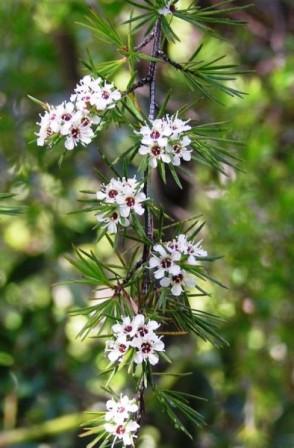 August 26, 2014 - At the stroke of a pen a New Zealand endemic tree has for the last 31 years been incorrectly regarded the same as a group of 'weedy' Australian shrubs and small trees. A New Zealand botanist has completed a 15-year study to reveal some surprises and discover astonishing cryptic diversity behind what was long considered a single tree species. The study was published in the open access journalPhytoKeys.
August 26, 2014 - At the stroke of a pen a New Zealand endemic tree has for the last 31 years been incorrectly regarded the same as a group of 'weedy' Australian shrubs and small trees. A New Zealand botanist has completed a 15-year study to reveal some surprises and discover astonishing cryptic diversity behind what was long considered a single tree species. The study was published in the open access journalPhytoKeys.
Known to botanists as Kunzea ericoides, this species was one of the many discoveries made in the north-western South Island of New Zealand by Jules Sébastien César Dumont d'Urville during the first voyage of the Astrolabe (1826-1829).
Initially described by French Professor of botany Achille Richard as Leptospermum ericoides, this species and the allied New Zealand endemicLeptospermum sinclairii were merged in 1983 with three other Australian species under the oldest available name (L. ericoides) as a new combination in the related genus Kunzea.
The saying that 'bad taxonomy kills' could not be more true, as the decision to merge the Australian and New Zealand species into the one shared species -- Kunzea ericoides -- resulted in absolute mayhem as a range of important New Zealand trees and shrubs were now regarded as identical to their distant Australian relatives all of which are serious agricultural pests known there as Burgan.
The present study draws on data obtained from experimental hybridisations, cytological investigations, modern molecular analyses and ecological studies published elsewhere by the author of this revision Dr Peter J. de Lange. ThePhytoKeys treatment by de Lange concludes that Kunzea ericoides is not shared between Australia and New Zealand; confirms the distinctiveness of the narrow-range rhyolite rock endemic K. sinclairii; and elevates another much misunderstood variety to species rank as K. linearis.
De Lange also recognises further seven species new to science. One, Kunzea robustais actually the most common Kunzea in New Zealand which despite being first recognised as distinct by the missionary botanist William Colenso in the 1840s, was denied formal recognition for some 170 years until now. Aside from Kunzea robusta de Lange recognises two other common new tree species (K. amathicola and K. serotina), and another four narrow-range endemics -- K. salterae, K. tenuicaulis, K. toelkenii, and K. triregensis. One of these species, K. tenuicaulis is known only from active geothermal fields.
Aside from the recognition of 10 endemic New Zealand species from what had been regarded as one in 1983, de Lange also reveals that the indigenous inhabitants of New Zealand the Maori already knew of many of these species, which they recognised by names which referred to their growth habit or wood properties.
It is shown that far from being serious agricultural weeds all the New Zealand Kunzeaare important keystone species, either forming their own distinct forest types or helping to heal damaged forest. Furthermore the New Zealand Kunzea species provide an important habitat for a wealth of endemic geckos, orchids and fungi -- a far cry indeed from their past much undeserved 'weed' status.
"This paper is also a brilliant showcase of how useful is the brand new PhytoKeyspublishing platform for the advancement of taxonomy. Once published taxonomic treatments of new species and any nomenclatural changes are automatically available in advanced open access, easy to find, and are stored in various data repositories in reusable format. Such wide availability of data helps for mistakes and misunderstanding regarding previous confusions in the taxonomy of a certain species to be avoided in future," comments Prof. Lyubomir Penev, managing director of Pensoft Publishers.
1. Peter de Lange. A revision of the New Zealand Kunzea ericoides (Myrtaceae) complex. PhytoKeys, 2014; 40: 1 DOI:10.3897/phytokeys.40.7973
Photo: This is a Kunzea ericoides flowering branchlet, in Pupu Springs, Golden Bay, North-west Nelson, South Island New Zealand. Credit: Peter J. de Lange; CC-BY 4.0
Bird Watching with Pittwater Natural Heritage Association (PNHA)
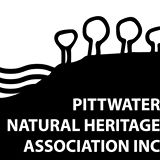
Sunday Birdwatching with PNHA
Would you like to know more about local birds? Our guides can help you see and hear them in these wonderful bushland reserves, and learn about their lives.
Our birdwalks start about 7.30 and end about 10am. Bring Binoculars and some morning tea for afterwards if you like. Older children welcome.
21 September Deep Creek, off Wakehurst Parkway
16 November Irrawong Reserve, Warriewood
Contact us to book and get details of each birdwalk.
Email pnhabirdwatching@gmail.com or ph: 0439 409 202/0402 605 721
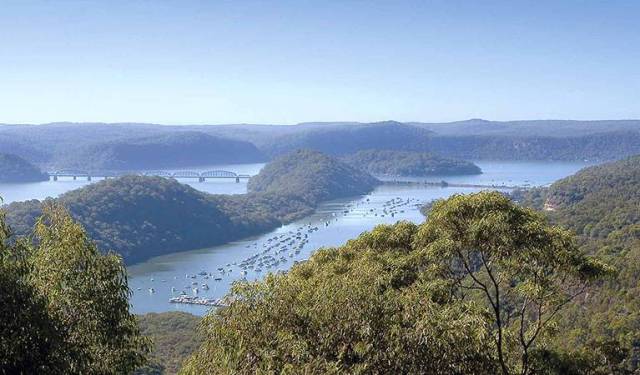
Muogamarra Nature Reserve open season 2014
Discover the cultural heritage and natural wonders of Muogamarra Nature Reserve this spring
Muogamarra Nature Reserve is home to an extraordinary landscape, open for just six weekends a year to preserve its fragile ecosystems and Aboriginal heritage. In spring, the reserve transforms into a brilliant display of colour when the spring wildflowers come into bloom.
This year, the Muogamarra spring flower open season takes place every Saturday and Sunday from 16 August to 21 September.
Join a NPWS Discovery tour and hear the secrets of Muogamarra from our volunteer guides. Tours are very popular, so early bookings are recommended.
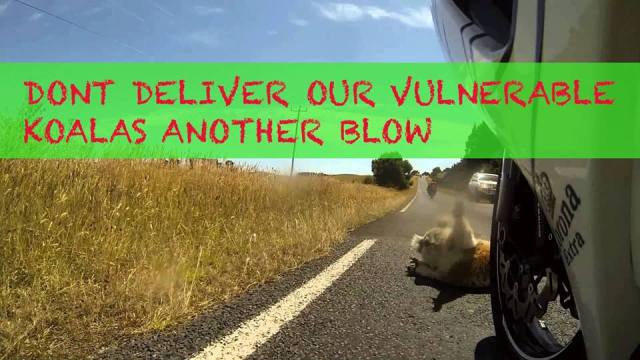
Australian Native Foods website:http://www.anfil.org.au/
Original Seasons of Australia
C/ - Bureau of Meteorology Australia
When flowers are in bloom, cold weather starts and winds increase, the Maung people of NT know its Wumulukuk – the longest of three seasons, spanning from March to July. More info here:http://bom.ws/y
New WIRES Wildlife Rescue App
This morning we launched our new WIRES Wildlife Rescue App!
 Download the free Rescue App to your smart phone or tablet to get access to wildlife advice and rescue assistance from the WIRES Rescue Team 7 days a week. You can find download details athttp://bit.ly/1oLQmOd
Download the free Rescue App to your smart phone or tablet to get access to wildlife advice and rescue assistance from the WIRES Rescue Team 7 days a week. You can find download details athttp://bit.ly/1oLQmOd
You can report rescues of sick, injured or orphaned wildlife directly from the app and have instant access to the most commonly needed information to help native animals in distress.
Visit the Apple store or Google Play store to download our the WIRES Wildlife Rescue App now. More information and links at http://bit.ly/1oLQmOd
2014 Australasian Bird Fair - Australasia’s first Bird Fair
October 25-26, 2014
The 2014 Australasian Bird Fair will be the first large-scale bird and wildlife event of its kind in Australasia. By all early indications it will be the largest in the Southern Hemisphere.
Raising awareness of birds in peril
The Australasian Bird Fair is a response to the need to raise awareness of the plight of so many bird species which are in peril across the Australasian region. Our current focus is particularly upon New Zealand, Australia and the Pacific Island nations. Raising funds from ticket sales for endangered species programs is a high priority, with all profits going to bird conservation.
Something for everyone
The Australasian Bird Fair will offer plenty of fun and educational activities for all. There will be opportunities to network with like minded people and find further engagement in conservation, bird watching and other nature-related activities. The Australasian Bird Fair will have something for everyone irrespective of their level of expertise or experience in birding! Bird Fair hours
The Australasian Bird Fair will be open from 9:00am to 6:00pm each day.
Visit www.birdfair.com.au/
Nikon Australia – Australasian Bird Fair Photography Competition
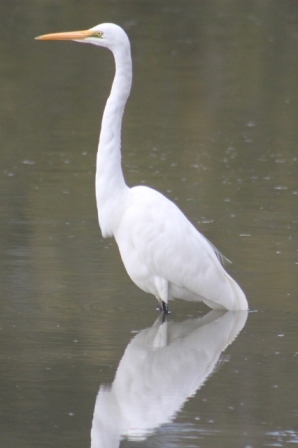 The Nikon Australia – Australasian Bird Fair Photography Competition is open to all. The total prize pool is in excess of $10,000. There are five categories:
The Nikon Australia – Australasian Bird Fair Photography Competition is open to all. The total prize pool is in excess of $10,000. There are five categories:
Bird Portraits (Whole bird, head shots, etc)
Flight (Images of birds in flight)
Environmental (Images of a bird or a flock of birds in their natural habitat)
Action & Behaviour (Photographs of a bird or birds in action or exhibiting interesting behaviour)
Digital Creation. (Free artistic manipulation of a bird image)
A fantastic prize pool!
The Winner of each category will receive a pair of Nikon Monarch 5 10×42 binoculars worth $499 each. The Runner Up in each category will receive a pair of Celestron Nature DX 8×32 binoculars worth $319 each.
A Grand Prize will also be offered by Nikon Australia: Nikon D810 camera body. With a massive 36.3 effective megapixels and all new FX-format image sensor, to get even better results through your lens! This fantastic prize is valued at $3999. There will also be a prize for the “People’s Choice” category: the Nikon 1 V3 kit with additional 70-300mm lens. The total value of the “People’s Choice” prize is $2298.
The deadline for entering the contest is midnight on 15th October 2014
Competition Rules and Entry
Read the competition rules and enter here
Junk food makes rats lose appetite for balanced diet
August 27, 2014 - A diet of junk food not only makes rats fat, but also reduces their appetite for novel foods, a preference that normally drives them to seek a balanced diet, reports a study published in the open-access journal Frontiers in Psychology.
The study helps to explain how excessive consumption of junk food can change behavior, weaken self-control and lead to overeating and obesity.
The team of researchers, led by Professor Margaret Morris, Head of Pharmacology from the School of Medical Sciences, UNSW Australia, taught young male rats to associate each of two different sound cues with a particular flavor of sugar water - cherry and grape.
Healthy rats, raised on a healthy diet, stopped responding to cues linked to a flavor in which they have recently overindulged. This inborn mechanism, widespread in animals, protects against overeating and promotes a healthy, balanced diet.
But after 2 weeks on a diet that included daily access to cafeteria foods, including pie, dumplings, cookies, and cake - with 150% more calories - the rats' weight increased by 10% and their behavior changed dramatically. They became indifferent in their food choices and no longer avoided the sound advertising the overfamiliar taste. This indicated that they had lost their natural preference for novelty. The change even lasted for some time after the rats returned to a healthy diet.
The researchers think that a junk diet causes lasting changes in the reward circuit parts of the rats' brain, for example, the orbitofrontal cortex, an area of the brain responsible for decision-making. They say these results may have implications for people's ability to limit their intake of certain kinds of foods, because the brain's reward circuitry is similar in all mammals.
"The interesting thing about this finding is that if the same thing happens in humans, eating junk food may change our responses to signals associated with food rewards," says UNSW Professor Morris. "It's like you've just had ice cream for lunch, yet you still go and eat more when you hear the ice cream van come by."
The World Health Organization estimates that over 10% of the world's adult population is obese and at least 2.8 million people die each year as a result of being overweight or obesity. Overweight and obesity are major risk factors for a number of chronic diseases, including diabetes, cardiovascular diseases and cancer.
"As the global obesity epidemic intensifies, advertisements may have a greater effect on people who are overweight and make snacks like chocolate bars harder to resist," adds Dr Amy Reichelt, lead author of the paper and UNSW postdoctoral associate.
Amy C. Reichelt, Margaret J. Morris, R. F. Westbrook. Cafeteria diet impairs expression of sensory-specific satiety and stimulus-outcome learning.Frontiers in Psychology, 2014; 5 DOI:10.3389/fpsyg.2014.00852
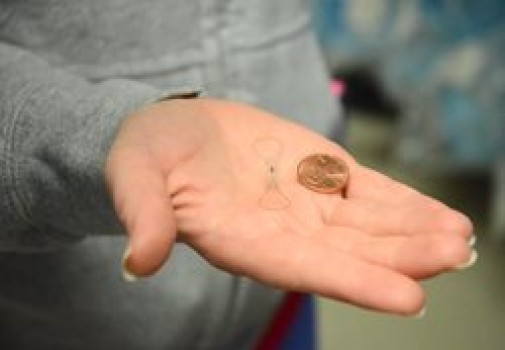
New implanted sensor could reduce heart failure admissions
August 26, 2014 - Unexpected trips to the hospital are inconvenient and worrisome for anyone, but for congestive heart failure sufferers, they can be all too frequent. Cardiologists can now implant a new tiny, wireless monitoring sensor to help doctors and patients manage heart failure while eliminating the need for frequent surprise hospital visits. The CardioMEMS HF System is the first and only FDA-approved heart failure monitoring device that has been proven to significantly reduce hospital admissions when used by physicians to manage the condition. The technology features a sensor that is implanted through a catheter into the pulmonary artery (PA) to directly measure PA pressure. Increased PA pressures appear before weight and blood pressure changes, which are often used as indirect measures of worsening heart failure.
According to the Centers for Disease Control and Prevention, more than 5.1 million Americans have heart failure, which occurs when the heart is unable to pump enough blood to meet the body's demands. Patients with heart failure are frequently hospitalized, have a reduced quality of life, and face a higher risk of death. CardioMEMS allows patients to transmit daily sensor readings from their homes to their healthcare providers, allowing for personalized management to reduce the likelihood of hospitalization. The sensor is designed to last the lifetime of the patient and doesn't require batteries, and there is no pain or sensation for the patient during the readings.
"All the patient has to do is lie back on a special pad," explained Bradford E. Warden, M.D., director of the WVU Heart Institute and chief of the WVU School of Medicine Section of Cardiology. "Radio waves are then transmitted to an external electronic system, and the device measures pressure in the pulmonary artery. It lets us notice any pressure changes three or four weeks before the patient develops pulmonary edema (fluid in the lungs) from exacerbated congestive heart failure. It gives us a chance to get pulmonary edema under control by adjusting medications while keeping the patient out of the hospital and in the comfort of his or her own home."
In addition to being only the fourth facility nationally to do the procedure, WVU Healthcare is the first institution to be certified to perform it, and Dr. Warden is the nation's first certified individual practitioner.
Richard Uchic of Thomas, W.Va., is the first WVU Healthcare heart patient to receive the CardioMEMS implant. In the past, the 72-year-old Tucker County resident would make frequent trips to Morgantown or neighboring Garrett County, Md., for treatment of sudden heart failure symptoms.
"The last time, I was having shortness of breath," explained Uchic. "I have to go over to Oakland (Md.) if I need to see someone in a hurry. This monitor will help the doctor decide if I should take more of my diuretic or other medications, and it should save me a trip to the hospital."
As use of the sensor increases, there is great potential for hospitals to see less of frequent heart failure patients like Uchic. Data from a clinical trial showed that the CardioMEMS technology reduces heart failure hospital admissions by up to 37 percent. According to the American Heart Association (AHA), the estimated direct and indirect cost of heart failure in the U.S. in 2012 was $31 billion. That number is expected to more than double by 2030.
The WVU Healthcare Heart Failure Program, led by Robert Hull, M.D., has earned national recognition by cutting hospital re-admissions, improving efficiency in patient care, and developing strategies to improve the patient experience.
In just its third year of existence, it has been named to the Target HF Honor Roll of the AHA Get With the Guidelines Gold Plus Award, an honor that reflects the program's commitment to AHA standards.
The above story is based on materials provided by WVU Healthcare and West Virginia University Health Sciences. The CardioMEMS device is shown next to a penny for scale.
Credit: Image courtesy of WVU Healthcare and West Virginia University Health Sciences
Health papers published this week:
Cancer-fighting drugs might also stop malaria early
August 25, 2014 - Scientists searching for new drugs to fight malaria have identified a number of compounds - some of which are currently in clinical trials to treat cancer - that could add to the anti-malarial arsenal.
Duke University assistant professor Emily Derbyshire and colleagues identified more than 30 enzyme-blocking molecules, called protein kinase inhibitors, that curb malaria before symptoms start.
By focusing on treatments that act early, before a person is infected and feels sick, the researchers hope to give malaria - especially drug-resistant strains - less time to spread.
The findings appear online and are scheduled to appear in a forthcoming issue of the journal ChemBioChem.
Malaria is caused by a single-celled parasite called Plasmodium that spreads from person to person through mosquito bites. When an infected mosquito bites, parasites in the mosquito's saliva first make their way to the victim's liver, where they silently grow and multiply into thousands of new parasites before invading red blood cells - the stage of the disease that triggers malaria's characteristic fevers, headaches, chills and sweats.
Most efforts to find safe, effective, low-cost drugs for malaria have focused on the later stage of the infection when symptoms are the worst. But Derbyshire and her team are testing chemical compounds in the lab to see if they can identify ones that inhibit malaria during the short window when the parasite is still restricted to the liver, before symptoms start.
One of the advantages of her team's approach is that focusing on the liver stage of the malaria lifecycle - before it has a chance to multiply - means there are fewer parasites to kill.
Using a strain of malaria that primarily infects rodents, Derbyshire and Jon Clardy of Harvard Medical School tested 1,358 compounds for their ability to keep parasites in the liver in check, both in test tubes and in mice.
"It used to be that researchers were lucky if they could identify one or two promising compounds at a time; now with advances in high-throughput screening technology we can explore thousands at once and identify many more," said Derbyshire, an assistant professor in the Departments of Chemistry and Molecular Genetics and Microbiology at Duke.
Focusing on a particular group of enzyme-blocking compounds called protein kinase inhibitors, they identified 31 compounds that inhibit malaria growth without harming the host. Several of the compounds are currently in clinical trials to treat cancers like leukemia and myeloma.
The same compounds that stopped the stage of malaria that lurks in the liver also worked against the stage that lives in the blood.
Malaria-free mice that received a single dose before being bitten by infected mosquitos were able to avoid developing the disease altogether.
Medicines for malaria have been around for hundreds of years, yet the disease still afflicts more than 200 million people and claims hundreds of thousands of lives each year, particularly in Asia and Africa. Part of the reason is malaria's ability to evade attack. One of the most deadly forms of the parasite, Plasmodium falciparum, has already started to outsmart the world's most effective antimalarial drug, artemisinin, in much of southeast Asia. Infections that used to clear up in a single day of treatment now take several days.
Diversifying the antimalarial arsenal could also extend the lifespan of existing drugs, since relying less heavily on our most commonly used weapons gives the parasite fewer opportunities to develop resistance, Derbyshire said.
Another advantage is that the compounds they tested suppress multiple malaria proteins at once, which makes it harder for the parasites to develop ways around them.
"That makes them like a magic bullet," she said.
Emily R. Derbyshire, Vanessa Zuzarte-Luís, Andreia D. Magalhães, Nobutaka Kato, Paul C. Sanschagrin, Jinhua Wang, Wenjun Zhou, Chandrasekhar V. Miduturu, Ralph Mazitschek, Piotr Sliz, Maria M. Mota, Nathanael S. Gray, Jon Clardy. Chemical Interrogation of the Malaria Kinome. ChemBioChem, 2014; DOI:10.1002/cbic.201400025
Aspirin may reduce the risks of reoccurring blood clots
August 25, 2014 - Aspirin may be a promising alternative for those who can’t take long-term anticoagulant drugs that prevent clots from reoccurring in the veins, according to new research in the American Heart Association journal Circulation. In a combined analysis of two similar independent studies, 1,224 patients who received 100 mg of aspirin a day to treat blood clots were monitored for at least two years. In the International Collaboration of Aspirin Trials for Recurrent Venous Thromboembolism or INSPIRE analysis, researchers found that aspirin reduced the risk of recurring blood clots by up to 42 percent.
Venous thromboembolism (VTE) are blood clots in veins. The blood clot can occur in the deep veins of the legs (deep vein thrombosis) and can break apart and travel to the lungs, where they block off arteries in the lungs (pulmonary embolism).
According to researchers, without treatment, people who have blood clots in their veins with no obvious cause have on average a 10 percent risk of another clot within the first year and a 5 percent risk per year thereafter.
“The treatment is warfarin or a newer anticoagulant usually given for at least six to 12 months to prevent a further blood clot,” said John Simes, M.D., lead author of study and director of the National Health and Medical Research Council Trials Centre and professor at the University of Sydney in Australia. “However, these people continue to be at risk.”
Co-author Cecilia Becattini, M.D., added, “Aspirin does not require laboratory monitoring, and is associated with about a 10-fold lower incidence of bleeding compared with oral anticoagulants. We are convinced that it will be an alternative for extended prevention of venous thromboembolism after 6–12 months of anticoagulant treatment.”
Although the study yielded clear results, researchers advise patients to talk to their doctor about taking aspirin after stopping treatment with anticoagulants.
“It is not recommended that aspirin be given instead of anticoagulant therapy, but rather be given to patients who are stopping anticoagulant therapy or for whom such treatments are considered unsuitable,” Simes said.
“Although less effective, aspirin is inexpensive, easily obtainable, safe and familiar to patients and clinicians worldwide. If cost is the main consideration, aspirin is a particularly useful therapy. The costs of treating future thromboembolic events is greater than the cost of the preventive treatment.”
J. Simes, C. Becattini, G. Agnelli, J. W. Eikelboom, A. C. Kirby, R. Mister, P. Prandoni, T. A. Brighton. Aspirin for the Prevention of Recurrent Venous Thromboembolism: The INSPIRE Collaboration. Circulation, 2014; DOI:10.1161/CIRCULATIONAHA.114.008828
Risk of young people driving drunk increases if their parents drink
August 26, 2014 – If parents consume alcohol, it is more likely that their children will drive under its influence. This is one of the conclusions of a new study analysing the data of more than 30,000 students and their relationship with drinking and driving. The results have been published in the "Adicciones" journal. Campaigns of the Spanish General Traffic Directorate warn that drinking and driving are two incompatible activities. However, a high percentage of accidents in Spain continue to occur because the driver has consumed alcohol, as was revealed by the report issued in 2007 by the European Monitoring Centre for Drugs and Drug Addiction (EMCDDA).
Experts consider the problem to be even more pronounced if the drivers are teenagers. Thus, a new study led by researchers of the University of Zaragoza analyses the socioeconomic factors related to driving under the influence of alcohol in Spanish adolescents between 14 and 18 years of age.
"It is difficult to convince a teenager that they should not drink if they are driving a vehicle," explained José Julián Escario Gracia, researcher at the Aragonese institution and lead author of this study, published in the Adicciones journal.
The data, from 30,183 students who participated in the 2008 State Survey on Drug Use in Secondary Schools, showed that 6.7% of students surveyed had driven after drinking alcohol. "This percentage may seem low, but bearing in mind that the mean age of participants was 15.60 years of age and, therefore, that few had a driving license, this figure is considerable," added the researcher.
The work also highlights that if parents consume alcohol, it is more likely that their children will end up driving under the influence, which shows, in Escario's words, that prevention is also the responsibility of parents, since their behaviour influences their children. This risky behaviour is more common in boys than in girls and also in older adolescents.
We can conclude from the results that information campaigns on the dangers of driving under the influence of alcohol work. "Some people have shown their scepticism regarding this matter, but in light of the work carried out, it seems that they do reduce the likelihood of adolescents driving drunk," the author said.
The expert maintains that, to be successful, these campaigns should focus more on male teenagers, older teenagers and those who do not study at Baccalaureate level, since they are the groups in which driving prevalence is highest. Likewise, if parents were included, better results could be obtained.
Maternal influence on consumption
"The percentage of teenagers who drive under the influence of alcohol is lower amongst those who live with their mothers," said Escario. "Perhaps the traditional role of the mother, characterised, amongst other features, by caring for their children, has an impact on this result."
In fact, other authors have found that maternal socialisation is related with low alcohol and tobacco consumption. Information campaigns in schools on the consequences of alcohol and other drugs reduce the likelihood of students driving under their influence.
This relationship was observed to a greater extent in males and young teenagers. "Furthermore, the result that relates being in a boarding school positively with a greater tendency to carry out this risky behaviour is curious," he said.
Adolescents and risky behaviour
Some previous studies indicate that there is a relationship between early alcohol consumption and the likelihood of suffering an alcohol-related accident at a later stage. In Spain, according to the State Survey on Drug Use in Secondary Schools (ESTUDES 2008), alcohol is the substance most consumed by teenagers.
"Hence, it would seem that, bearing in mind that it is not permitted to legally drive cars in Spain until 18 years of age, the incidence of accidents amongst teenagers due to driving should be low," according to Escario.
The author suggests that this could be the reason why few studies have analysed this behaviour, even though it is known that it is legal to drive mopeds from 15 years of age (before 2010, from 14 years of age) and motorbikes of 125 cm3 from 16 years of age.
Journal References:
Susan L. Brown, Lauren N. Rinelli. Family Structure, Family Processes, and Adolescent Smoking and Drinking. Journal of Research on Adolescence, 2010; 20 (2): 259 DOI: 10.1111/j.1532-7795.2010.00636.x
María-José BarlésArizón; José-Julián Escario; José Galbe Sánchez-Ventura.Predictors of driving after drinking among Spanish students. Adicciones, 26(2), 96-105
Hingson, R., Heeren, T., Levenson, S., Jamanka, A., & Voas, R. Age of drinking onset, driving after drinking, and involvement in alcohol related motor-vehicle crashes. Accident Analysis and Prevention, 34(1), 85-92
Disability, deafness often go hand-in-hand
August 26, 2014 - At least forty per cent of UK people with learning disabilities are suffering from hearing loss, but new research shows they are unlikely to be diagnosed. The research hearing loss in people with learning disabilities, by Lynzee McShea, who is studying a professional doctorate at the University of Sunderland, focuses on the current issues people with learning disabilities (PWLD) are facing and why they are left undiagnosed in the long-term.
The report, published in the British Journal of Healthcare Assistants, says PWLD are more likely to have hearing loss than the general population but are less likely to have this diagnosed and managed with hearing aids. This is mainly because hearing loss diagnosis relies on self-referral, which is an initial barrier for PWLD, who may not have the awareness that they have a hearing loss, or the communication skills to alert others to this.
However, initial referral is just one small part of the process. Barriers can also be found during the hearing assessment and in after care, following hearing aid fitting.
Carers and support workers also need to receive a better education because those with learning disabilities often rely on them for detection and management of hearing loss, the report urges.
Lynzee McShea, a senior clinical scientist in audiology at Sunderland Royal Hospital, claims more than 90 per cent of people with learning disabilities she has assessed have been diagnosed with hearing loss, despite fewer than 10 per cent of carers having any concerns regarding hearing prior to the consultation.
Lynzee, said: "Healthcare professionals rely on family carers and paid support workers to detect hearing problems, support the individual to attend an assessment and to then ensure consistent hearing aid use and aftercare. This is a big ask and our research suggests most carers and support workers do not yet have the necessary skills to do this optimally."
The University of Sunderland and Lynzee are now working with support workers to design training programmes to increase their knowledge of hearing loss and raise awareness of the benefit hearing aids can bring.
Lynzee added: "Better hearing can improve the quality of life significantly and we have powerful evidence of the difference hearing aids can make in the lives of individuals with learning disabilities. The next phase of the research involves working in collaboration with support workers, using their ideas and feedback, to design a training programme that enhances their knowledge and allows them to make a difference in their working practice."
However, even if a carer does suspect the possibility of hearing loss, barriers remain because hearing loss is not seen as a priority by GPs compared to other health problems. The report also says there are often misconceptions that people with learning disabilities cannot have their hearing tested or will not tolerate hearing aids. With at least 40 per cent of PWLD thought to have a hearing loss, this equates to hundreds of thousands of individuals in the UK with unmet needs.
The above story is based on materials provided by University of Sunderland.
Exposure to toxins makes great granddaughters more susceptible to stress, rat study shows
August 25, 2014 - Scientists have known that toxic effects of substances known as endocrine disrupting chemicals (EDCs), found in both natural and human-made materials, can pass from one generation to the next, but new research shows that females with ancestral exposure to EDC may show especially adverse reactions to stress. According to a new study by researchers from The University of Texas at Austin and Washington State University, male and female rats are affected differently by ancestral exposure to a common fungicide, vinclozolin. Female rats whose great grandparents were exposed to vinclozolin become much more vulnerable to stress, becoming more anxious and preferring the company of novel females to familiar females. Males who have the same combination of ancestral exposure and stress do not have the same adverse effects.
"These results should concern us all because we have been exposed to endocrine disrupting chemicals for decades and we all go through natural challenges in life," said David Crews, the Ashbel Smith Professor of Zoology and Psychology at The University of Texas at Austin and lead author of the study. "Those challenges are now being perceived differently because of this ancestral exposure to environmental contamination."
The study was published July 22 online in the journal Endocrinology.
Vinclozolin is a fungicide commonly used by farmers to treat fruits and vegetables.
To test the effects of stress on rats, the researchers confined some of them to soft, warm cylinders for six hours a day for three weeks. This was done during adolescence, a developmentally sensitive time of life for rats, just as for humans. Months later, the researchers tested the brain chemistry, brain function, gene expression and behavior of the rats as adults.
They discovered that for female rats, ancestral exposure to vinclozolin alone or stress during the animal's adolescence alone had negligible effects on the rats' hormonal balance and behavior. However, the combination of ancestral exposure and stress caused the female rats to have dramatically higher levels of corticosterone (a stress hormone similar to cortisol in humans), higher expression of genes associated with anxiety and more anxious behaviors. Other research has shown that stress hormones cause degeneration of a region of the brain associated with memory and learning.
Crews said that following exposure to EDCs, what is being passed down from generation to generation is not a change in the genetic code of the animals, but rather a change in the way specific genes are expressed. Gene expression is the process by which a cell uses the genetic code to make useful products such as proteins. If a section of a person's genetic code were a cookie recipe, gene expression would refer to how many cookies, if any, a cook makes with the recipe. The observation that changes in gene expression can be passed on to future generations has led to a new field of research known as epigenetics.
Crews and others have shown that EDCs can increase the risk in future generations for human illnesses such as autism, obesity and cardiovascular disease. Crews noted that environmental levels of EDCs are continuing to rise, as well as the rates of these diseases, particularly mental disorders.
Ross Gillette, Isaac Miller-Crews, Eric E. Nilsson, Michael K. Skinner, Andrea C. Gore, David Crews. Sexually dimorphic effects of ancestral exposure to vinclozolin on stress reactivity in rats. Endocrinology, 2014; en.2014-1253 DOI:10.1210/en.2014-1253
Sleep drunkenness disorder may affect one in seven
August 25, 2014 – A study is shining new light on a sleep disorder called "sleep drunkenness." The disorder may be as prevalent as affecting one in every seven people. The research is published in the August 26, 2014, print issue of Neurology®, the medical journal of the American Academy of Neurology. Sleep drunkenness disorder involves confusion or inappropriate behavior, such as answering the phone instead of turning off the alarm, during or following arousals from sleep, either during the first part of the night or in the morning. An episode, often triggered by a forced awakening, may even cause violent behavior during sleep or amnesia of the episode.
"These episodes of waking up confused have received considerably less attention than sleepwalking even though the consequences can be just as serious," said study author Maurice M. Ohayon, MD, DSc, PhD, with Stanford University School of Medicine in Palo Alto, CA.
For the study, 19,136 people age 18 and older from the general US population were interviewed about their sleep habits and whether they had experienced any symptoms of the disorder. Participants were also asked about mental illness diagnoses and any medications they took.
The study found that 15 percent of the group had experienced an episode in the last year, with more than half reporting more than one episode per week. In the majority of cases - 84 percent - people with sleep drunkenness also had a sleep disorder, a mental health disorder or were taking psychotropic drugs such as antidepressants. Less than 1 percent of the people with sleep drunkenness had no known cause or related condition.
Among those who had an episode, 37.4 percent also had a mental disorder. People with depression, bipolar disorder, alcoholism, panic or post-traumatic stress disorder and anxiety were more likely to experience sleep drunkenness.
The research also found that about 31 percent of people with sleep drunkenness were taking psychotropic medications such as antidepressants. Both long and short sleep times were associated with the sleep disorder. About 20 percent of those getting less than six hours of sleep per night and 15 percent of those getting at least nine hours experienced sleep drunkenness. People with sleep apnea also were more likely to have the disorder.
"These episodes of confused awakening have not gotten much attention, but given that they occur at a high rate in the general population, more research should be done on when they occur and whether they can be treated," said Ohayon. "People with sleep disorders or mental health issues should also be aware that they may be at greater risk of these episodes."
M. M. Ohayon, M. W. Mahowald, D. Leger. Are confusional arousals pathological?Neurology, 2014; 83 (9): 834 DOI:10.1212/WNL.0000000000000727
Disclaimer: These articles are not intended to provide medical advice, diagnosis or treatment. Views expressed here do not necessarily reflect those of Pittwater Online News or its staff.

Enter The Nature Conservancy Australia Nature Writing Prize today!
Calling all nature writers. The Nature Conservancy Australia is delighted to open the third biennial Nature Writing Prize.
The $5,000 award is for an essay between 3,000 and 5,000 words in the genre of ‘Writing of Place’ and the winning essay will be published in the Australian Book Review. The prize will go to an Australian writer whose entry is judged to be of the highest literary merit and which best explores his or her relationship and interaction with some aspect of the Australian landscape. The competition’s judges are Jesse Blackadder, award-winning author of Chasing the Light and Paruku The Desert Brumby, and Robert Gray, renowned poet, critic, and freelance writer.
The prize has been made possible thanks to a generous donation from The McLean Foundation, which is keen to promote and celebrate the literature of nature in Australia.
The deadline for submissions is December 24, 2014, so get out your pens and start writing! Click here to learn more about the prize and review the terms and conditions for entering.